McDonald’s might not be where you expect to find a significant investment in the holistic fusion of architecture and the natural world. Yet earlier this year, the iconic fast-food chain opened a net-zero restaurant at Walt Disney World, in Orlando, Florida, that’s rooted in biophilia, a design concept that’s time has finally arrived. 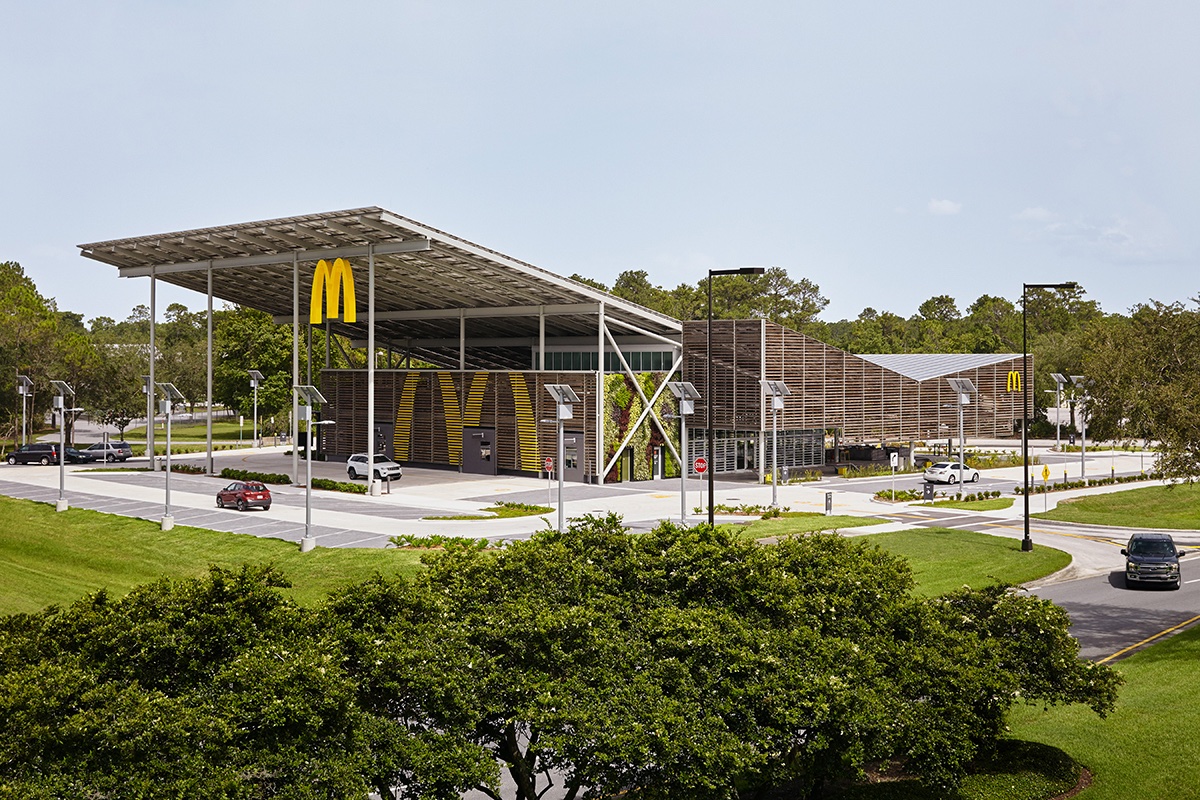
In Orlando, Florida, McDonald’s flagship is 100% solar powered. Photo: Kate Joyce Studios
Stephen R. Kellert, a social ecology professor at Yale, originally pioneered the term in the 1980s. Through various books, he articulated what constitutes biophilic design and, in the process, distinguished it from the ongoing rampages of greenwashing. Its principles run deeper than simply adding plants to a room. Biophilia stems from the fact that humans are biologically encoded to harmonize with nature and that connectivity is instrumental to our health. Given that most of us are indoors almost exclusively, integrating nature into the built environment is not a luxury or aesthetic preference, it is essential to our physiological and psychological wellbeing.
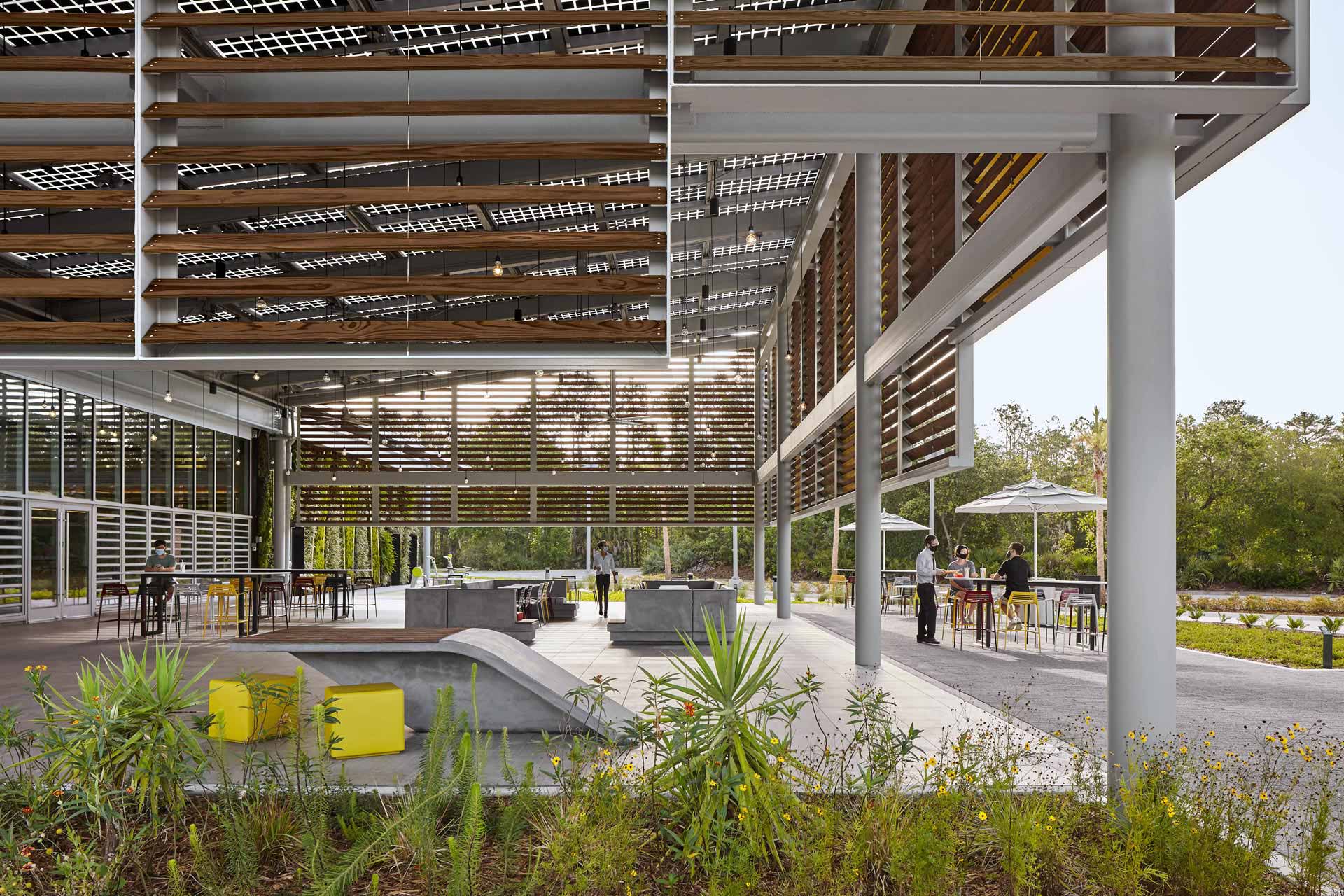
The fast-food restaurant relies on natural ventilation for most of the year. Photo: Kate Joyce Studios.
The first Biophilic Design Award, named in Kellert’s honour, was launched by the International Living Future Institute in 2017 to boost momentum in adopting the practice. Among last year’s winners was Le Phénix, a 1950s-era warehouse in Montreal that is now head office for Lemay, one of Canada’s leading architecture and planning firms. The retrofitted building is a crowning showpiece for the firm and living proof of its ambitious commitment to net-positive design, from reusing an existing building and sourcing eco-friendly materials to investing in its 350 employees’ day-to-day happiness.
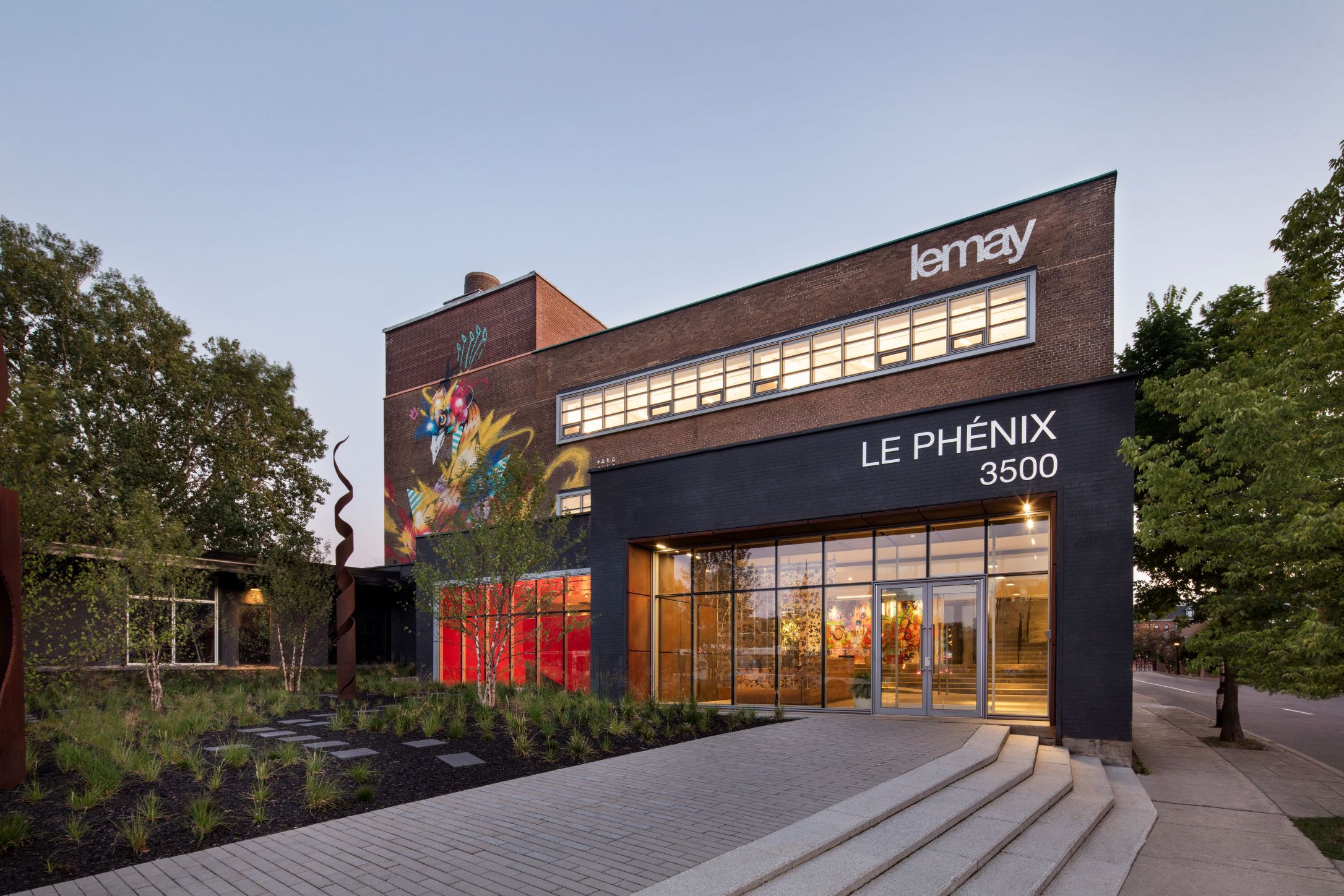
Le Phénix, the net-positive head office of architecture firm Lemay in Montreal. Photo: Adrien Williams
Upgrades to the three-storey structure fit easily into Kellert’s definition of biophilia. Employees enjoy an abundance of daylight and foliage via a living green wall and climbing-plant modules that help improve indoor air quality and balance humidity. The wellness of staff extends into accommodating flexible work hours and committed space for exercise and relaxation, along with a supply of fresh food in the communal kitchen.
The former warehouse is wildly energy-efficient, too, due to triple-pane windows, improved roof insulation and 379 photovoltaic panels with a total capacity of 134 kW. According to president Louis T. Lemay, protecting the environment through smart building doesn’t cost more in the long term. “Our projects have greater social acceptability,” he says, “which generates more ROI and boosts market value.”
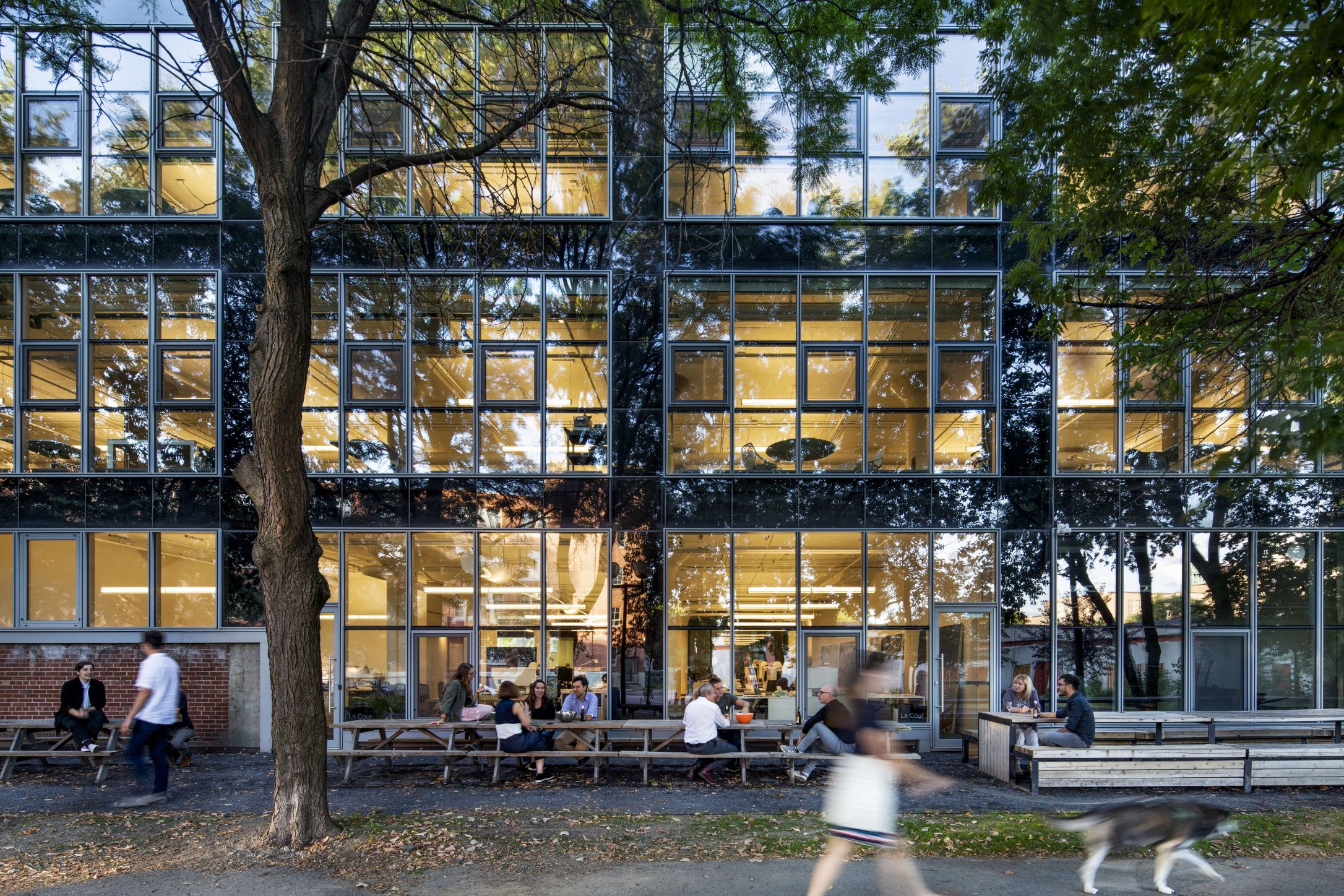
Human beings have a biological need to affiliate with nature. Photo: Adrien Williams
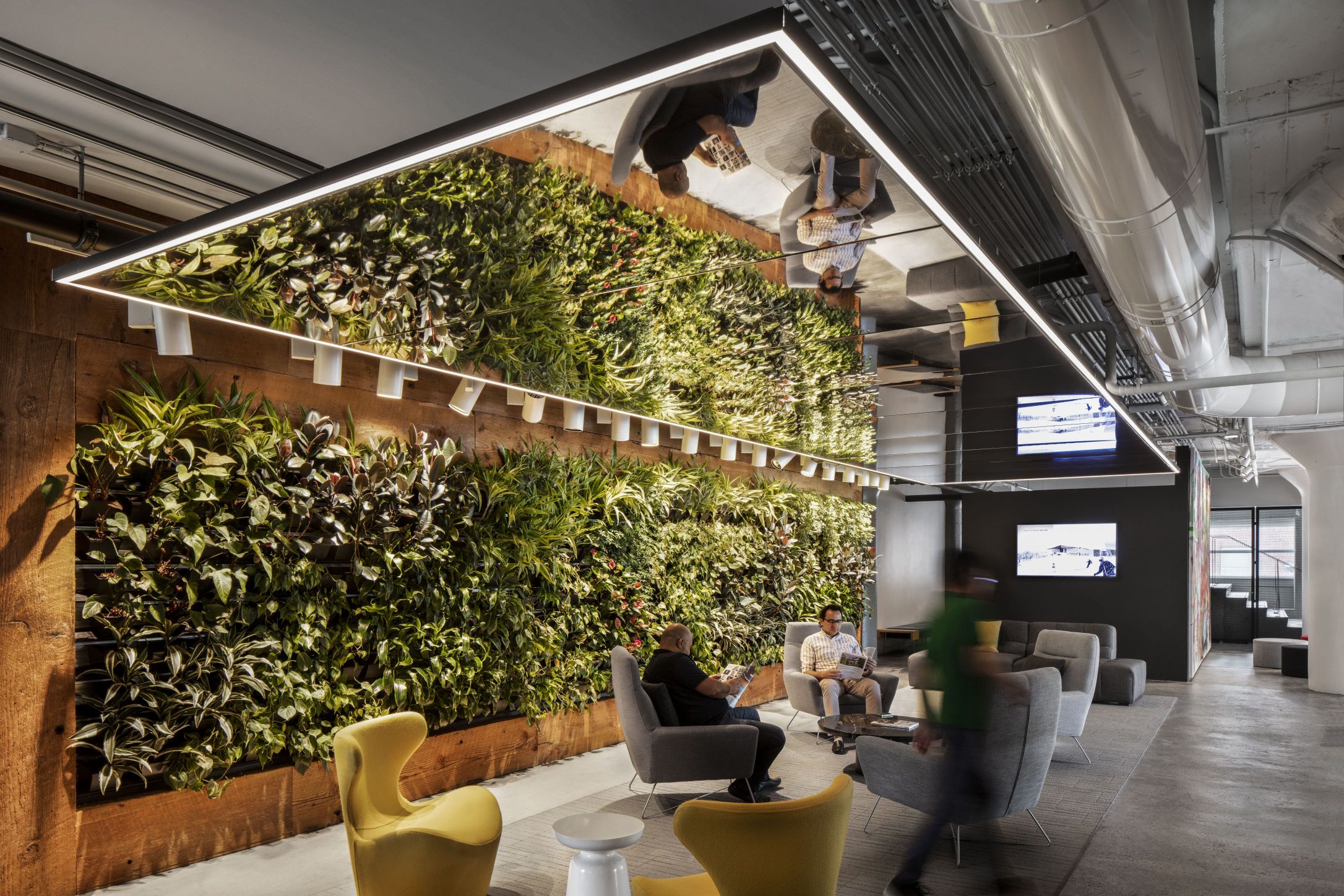
The presence of natural vegetation, indoors or out, reduces stress. Photo: Adrien Williams
McDonald’s understands those social and economic benefits, too. Its Orlando restaurant is an equally stellar model of biophilia in action, where every feature improves on adopting a renewed consciousness toward nature. Designed by Ross Barney Architects of Chicago, the airy, 745-square-metre eatery is net-zero, powered by rooftop photovoltaics and solar technology embedded in glass that shades an outdoor dining area. The amount of energy generated by channeling that famous Florida sunshine is equal to what the restaurant uses over the course of a year.
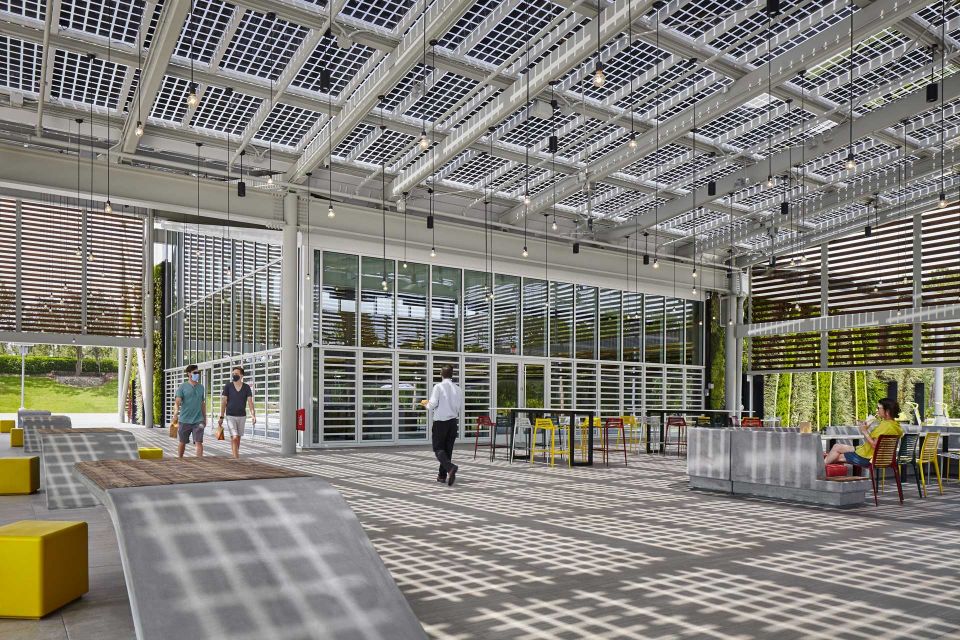
Even in subtropical Florida, natural ventilation can suffice. Photo: Kate Joyce Studios
Its design takes further advantage of the subtropical location, relying on natural ventilation for more than half of the year. When air-conditioning is required, its Jalousie windows, operated by outdoor humidity and temperature sensors, close automatically. The site is also a lab, where McDonald’s is testing new energy-efficient equipment for cooking burgers on grills that can go on standby when there are fewer customers, thereby reducing the energy load of a continual burn. Considering the franchise feeds 37 million people a day, the savings potential is enormous.
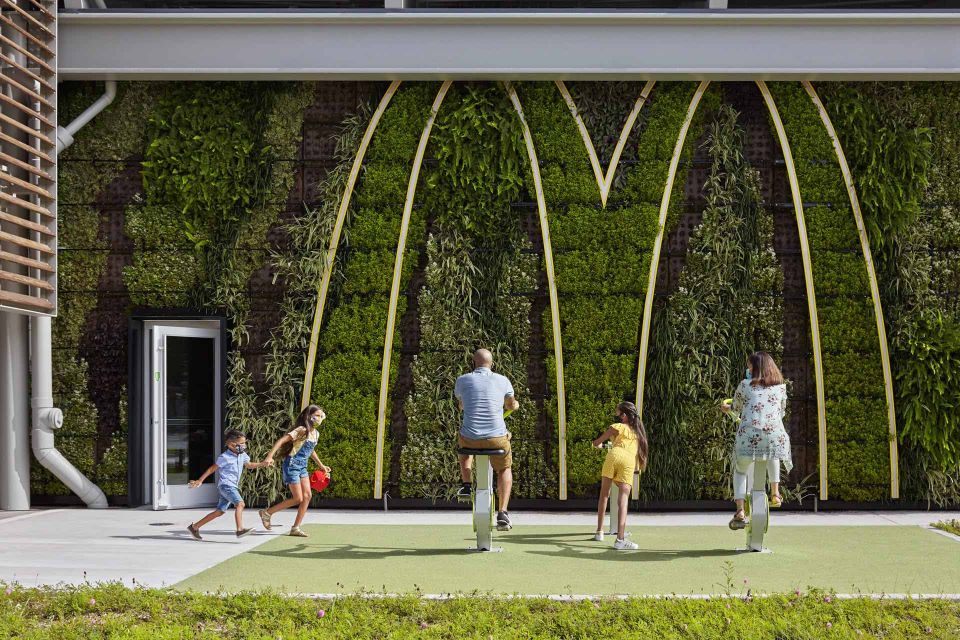
Every feature improves on adopting a renewed consciousness toward nature. Photo: Kate Joyce Studios.
Both projects are proof of what Kellert has told us all along: “We will never be truly healthy, satisfied, or fulfilled if we live apart and alienated from the environment from which we evolved.”
Written by Catherine Osborne